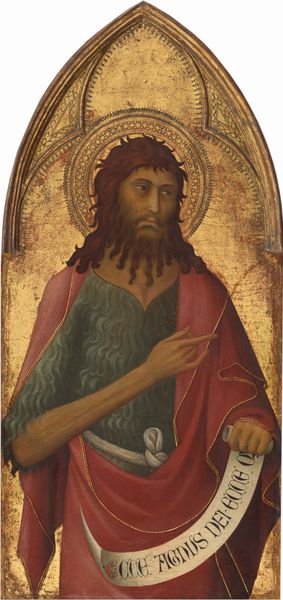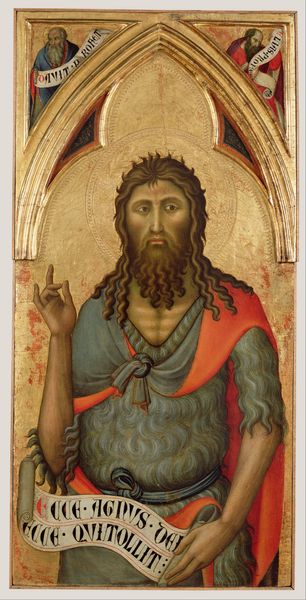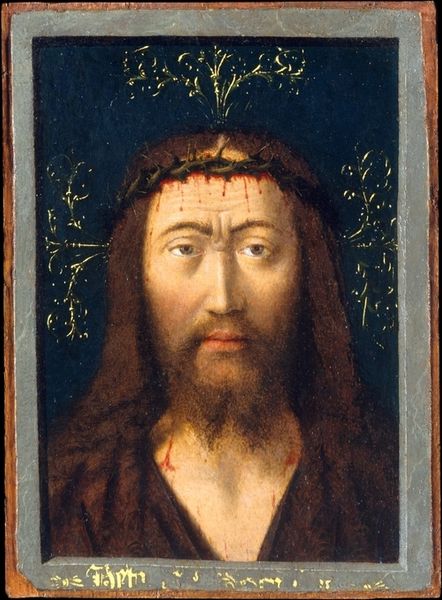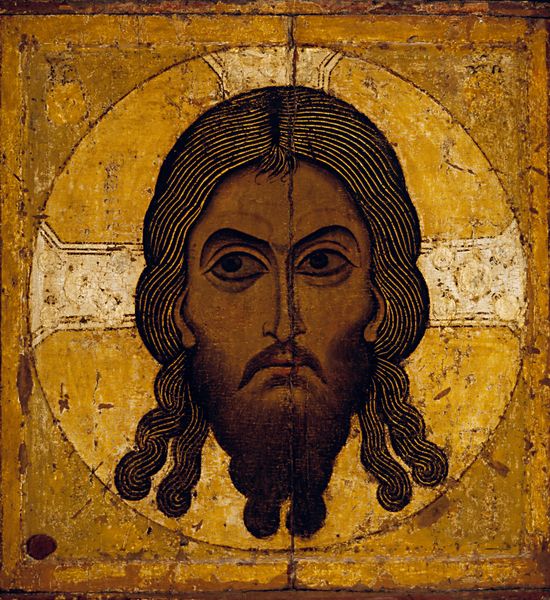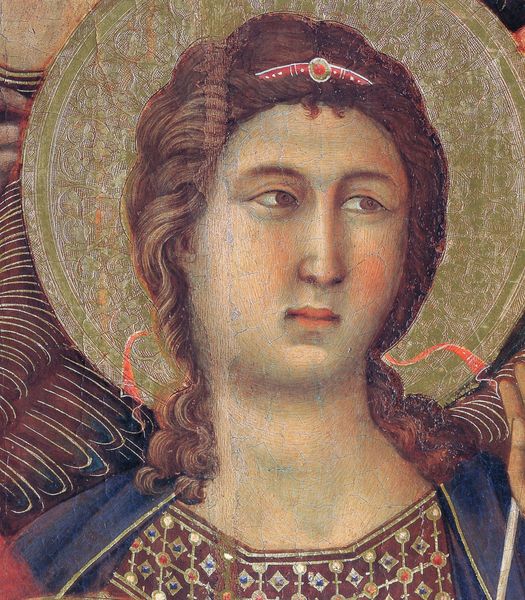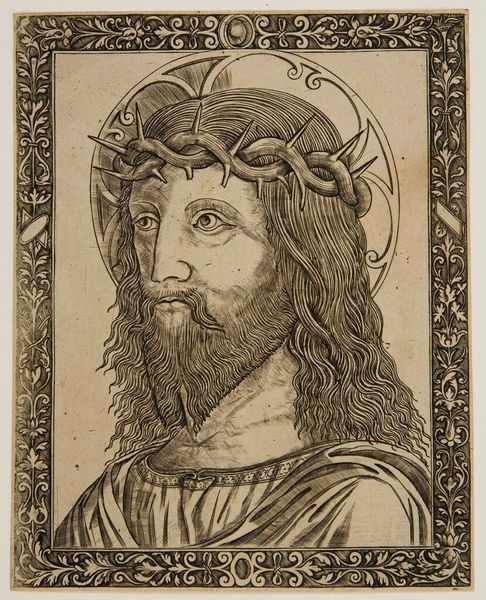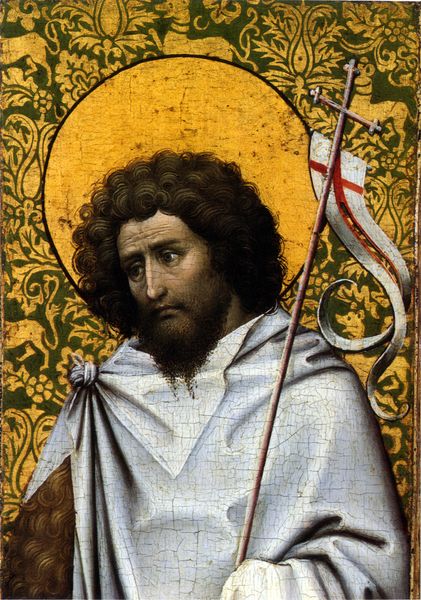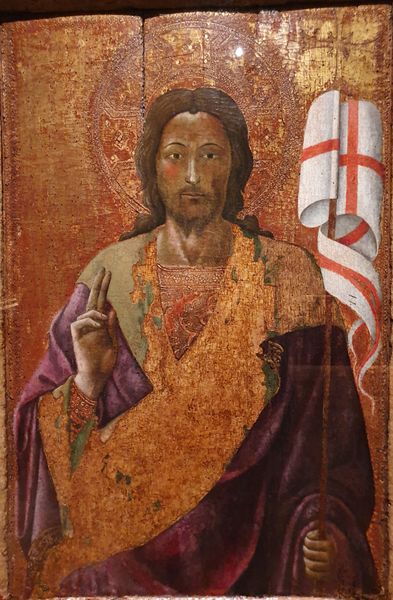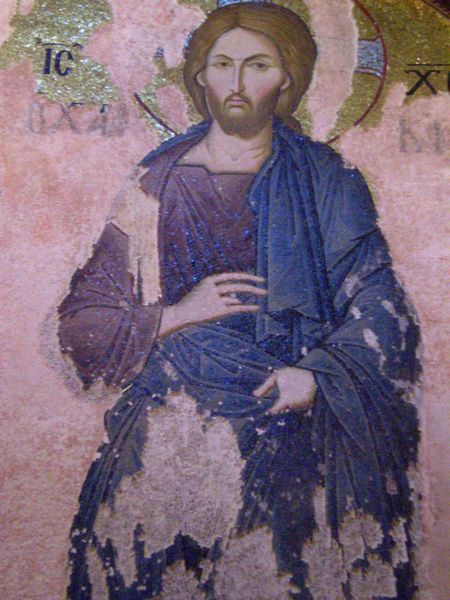
tempera, painting
#
portrait
#
medieval
#
head
#
tempera
#
painting
#
sienese-school
#
portrait reference
#
christianity
#
history-painting
#
italian-renaissance
Copyright: Public domain
This fragment by Duccio, created around the early 14th century, offers us a glimpse into the religious and social fabric of the late medieval period. Duccio, working in Siena, Italy, was at the forefront of a movement that began to humanize religious figures, moving away from the more rigid Byzantine style. Here, John the Baptist's gaze drifts slightly off-center, a subtle departure from traditional representations of saints that engaged directly with the viewer. This shift reflects a changing relationship between the divine and the human. We see a figure of deep contemplation, marked by an emotional depth that invites empathy. Duccio's work reflects a time when religious art played a crucial role in shaping identity and moral values. By moving towards more naturalistic depictions, Duccio created space for a more personal and emotional connection to faith. This fragment, even in its incomplete form, embodies a pivotal moment in art history, where the spiritual begins to embrace the human.
Comments
No comments
Be the first to comment and join the conversation on the ultimate creative platform.
